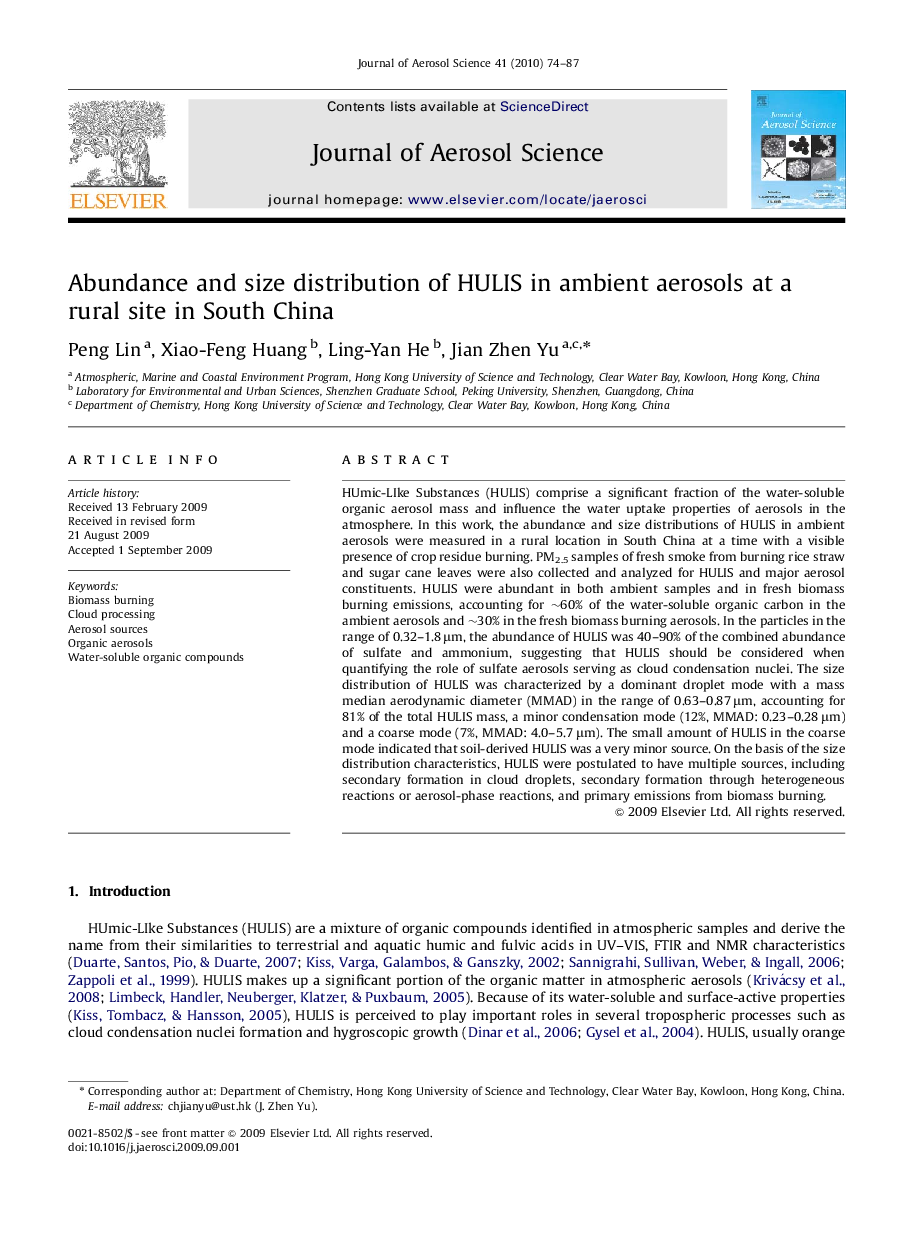| Article ID | Journal | Published Year | Pages | File Type |
|---|---|---|---|---|
| 4452913 | Journal of Aerosol Science | 2010 | 14 Pages |
HUmic-LIke Substances (HULIS) comprise a significant fraction of the water-soluble organic aerosol mass and influence the water uptake properties of aerosols in the atmosphere. In this work, the abundance and size distributions of HULIS in ambient aerosols were measured in a rural location in South China at a time with a visible presence of crop residue burning. PM2.5 samples of fresh smoke from burning rice straw and sugar cane leaves were also collected and analyzed for HULIS and major aerosol constituents. HULIS were abundant in both ambient samples and in fresh biomass burning emissions, accounting for ∼60% of the water-soluble organic carbon in the ambient aerosols and ∼30% in the fresh biomass burning aerosols. In the particles in the range of 0.32–1.8 μm, the abundance of HULIS was 40–90% of the combined abundance of sulfate and ammonium, suggesting that HULIS should be considered when quantifying the role of sulfate aerosols serving as cloud condensation nuclei. The size distribution of HULIS was characterized by a dominant droplet mode with a mass median aerodynamic diameter (MMAD) in the range of 0.63–0.87 μm, accounting for 81% of the total HULIS mass, a minor condensation mode (12%, MMAD: 0.23–0.28 μm) and a coarse mode (7%, MMAD: 4.0–5.7 μm). The small amount of HULIS in the coarse mode indicated that soil-derived HULIS was a very minor source. On the basis of the size distribution characteristics, HULIS were postulated to have multiple sources, including secondary formation in cloud droplets, secondary formation through heterogeneous reactions or aerosol-phase reactions, and primary emissions from biomass burning.
